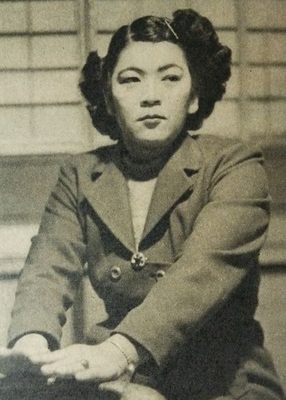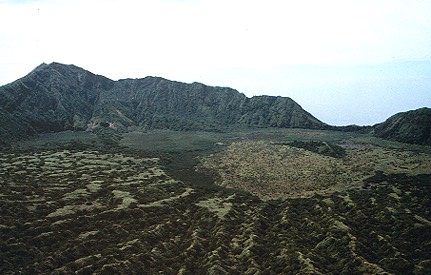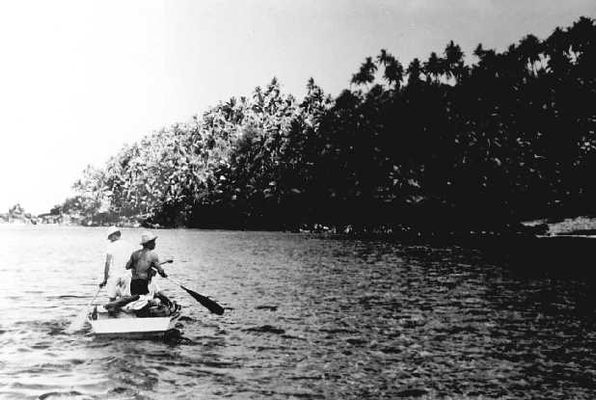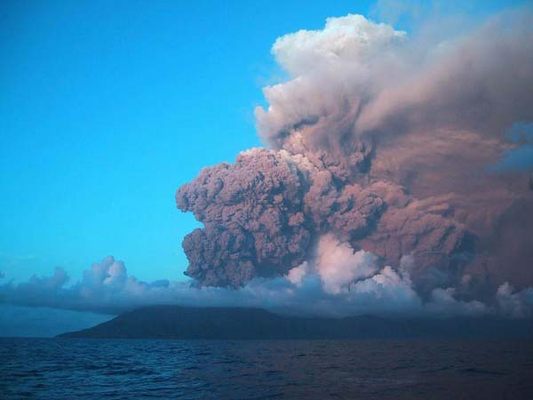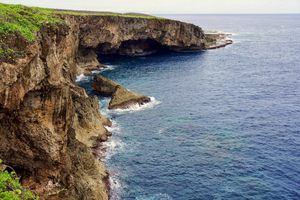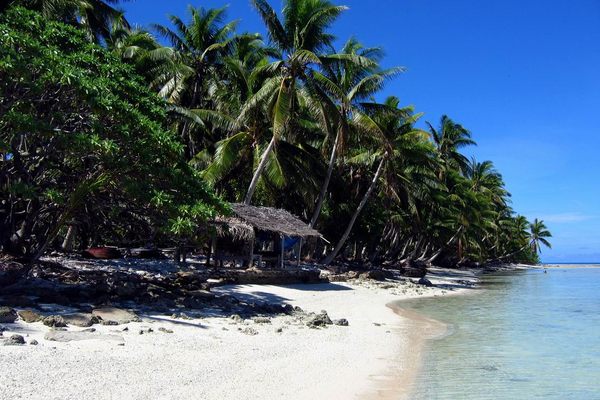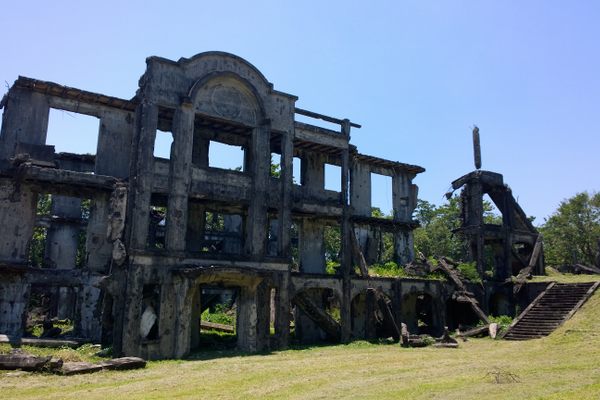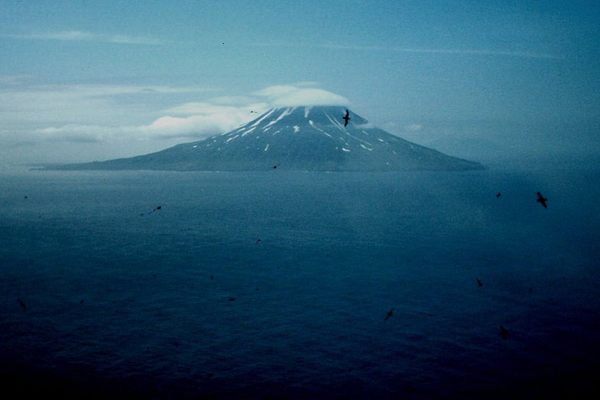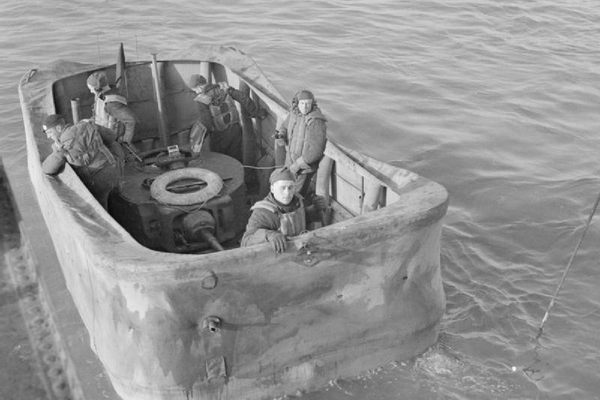About
Anatahan, in the Northern Mariana Islands, only measures around 13 square miles, with one of the archipelago's most active volcanoes at its very center. Spanish missionaries first encountered the island in 1668, evacuated most of the local Chamorro population, and established a large coconut plantation, exporting around 125 tons yearly at the end of 19th century. But the island would be nothing out of the ordinary if not for the the strange story of the "Queen of Anatahan" and her 33 men.
The Spanish sold Anatahan plantation to the Germans in 1899, who then sold it to Japan after World War I. The Japanese revamped the plantation and sent along Kikuichiro Higa to oversee about 45 Chamorro workers. Kikuichiro then appointed a deputy overseer, Shoichi Higa, who came to the island with his 28-year-old wife just before the start of the Second World War.
The war mostly passed by Anatahan, despite the fact that Americans and Japanese were waging war all around it. Still, Shoichi Higa grew fearful for his sister, who lived on Saipan approximately 65 nautical miles to the south. He left to find her, promised to return within a month but never came back. His wife, Kazuko, soon grew lonely and “married” her husband's boss, Kikuichiro Higa.
Life for the newlyweds went on uneventfully until 1944, when one June morning three Japanese vessels were bombed by U.S. planes not far from the island. The vessels sank, and 31 Japanese sailors swam to safety on Anatahan, where they were welcomed by Kikuichiro, the overseer, and Kazuko, the only woman on the entire island.
The Japanese castaways settled the island and lived relatively comfortably. They lived off the local fruit, vegetables, and animals, and even brewed their own coconut wine. One of the only times they were ever disturbed by the war was when an American B-29 bomber crashed on Anatahan in 1945. The settlers looted the wreck and used its materials to craft pots, pans, dishware, knives, shelter, and even clothing from the unused parachutes.
Chamorro people from neighboring islands were sent by the U.S. military to salvage the bodies of the B-29 crew and evacuate the remaining plantation workers in February of 1945. They returned with a report of a thriving Japanese camp of 32 men and one woman. When the Japanese surrendered in August of the same year, American planes dropped pamphlets on Anatahan informing the camp of the end of the war. Now armed with pistols found on the B-29, the Japanese camp believed this to be a trick and remained prepared to fight.
Trouble began when Kikuichiro Higa died in 1946. Kazuko took her late husband's place as leader of the island. Though she wasn't particularly beautiful, as the sole woman in the company Kazuko became the primary object of desire and obsession, even more so than the precious American pistols. Captain Ishida, the highest ranking soldier, hoped to settle rivalries among his men by marrying one of them to Kazuko. Mysteriously, the new husband drowned not long after the wedding. Kazuko went on to take four more husbands, each one successively murdered in mad lusty vengeance. Altogether 11 men died. One was found with 13 stab wounds, a result of a violent fight over Kazuko.
In July of 1950, the men determined that Kazuko was more trouble than she was worth and planned to execute her. When one of them warned her, she went into hiding and was rescued when she flagged a U.S. vessel a few weeks later. Upon her return to Japan she toured the cities for a while as a minor celebrity, telling her strange tale of being “The Queen of Anatahan." As if her story could not grow any stranger, when she returned to her home in Okinawa she found her first husband, Shoichi, and married him again. After her celebrity died down, Kazuko faded into obscurity before her death in the early 1970s.
The dozen remaining Japanese soldiers held out on Anatahan a year after their "Queen's" departure. The U.S. continued to drop flyers informing them the war had ended six years earlier. When this did not work, the planes began to drop letters from the soldiers' relatives and Japanese authorities, begging the men to to surrender. They finally did so, waving white flags on the beach to a passing ship, on June 30th, 1951.
After the Japanese left, a small group of Northern Mariana Islanders settled on the western side of Anatahan. They were evacuated in 1990 after an earthquake, which led to a series of volcanic eruptions between 2003 and 2008. The island has been uninhabited ever since.
The story of Kazuko and her soldiers was retold in books and films, one of them directed by Josef von Sternberg. The lurid retellings largely paint the "Queen of Anatahan" as a Machiavellian temptress, manipulating men for her own entertainment. A few depict her as a helpless victim. The true story of what really happened on Anatahan will only ever be known to those who were there.
Related Tags
Know Before You Go
Anatahan can only be reached by boat or helicopter. The island is uninhabited due to its active volcano.
Community Contributors
Added By
Published
May 11, 2017
Sources
- http://www.japantimes.co.jp/culture/2014/05/03/books/book-reviews/homage-queen-anatahan/#.WBnQNuDhCCg
- http://www.japanzine.jp/article/jz/1733/dont-mention-the-war
- http://cdnc.ucr.edu/cgi-bin/cdnc?a=d&d=MT19521121.2.73
- https://de.wikipedia.org/wiki/Anatahan
- http://www.newyorker.com/magazine/1962/03/17/the-stragglers-even-if-it-takes-a-hundred-years
- http://my.raex.com/~obsidian/oceania.html
- http://www.paganislandinthedistance.com/pagan_island_in_the_distance.pdf
- http://argunners.com/japanese-surrender-1951-island-anatahan/
- https://books.google.gr/books?id=nE4EAAAAMBAJ&pg=PA21&lpg=PA21&dq=anatahan+1951&source=bl&ots=3qh8DVVMHi&sig=LDxc-A5rKdOapbTknx6rb2HXTRE&hl=en&sa=X&ved=0ahUKEwiJqeztqZPNAhWDK8AKHehwCJ0Q6AEINTAE#v=onepage&q=anatahan%201951&f=false
- https://news.google.com/newspapers?nid=1144&dat=19520713&id=FmMeAAAAIBAJ&sjid=yo4EAAAAIBAJ&pg=3670,3877361&hl=de
- https://mikedashhistory.com/2015/09/15/final-straggler-the-japanese-soldier-who-outlasted-hiroo-onoda/
- http://www.pacificwrecks.com/provinces/marianas_anatahan.html
- http://www.japanzine.jp/article/jz/1733/dont-mention-the-war

